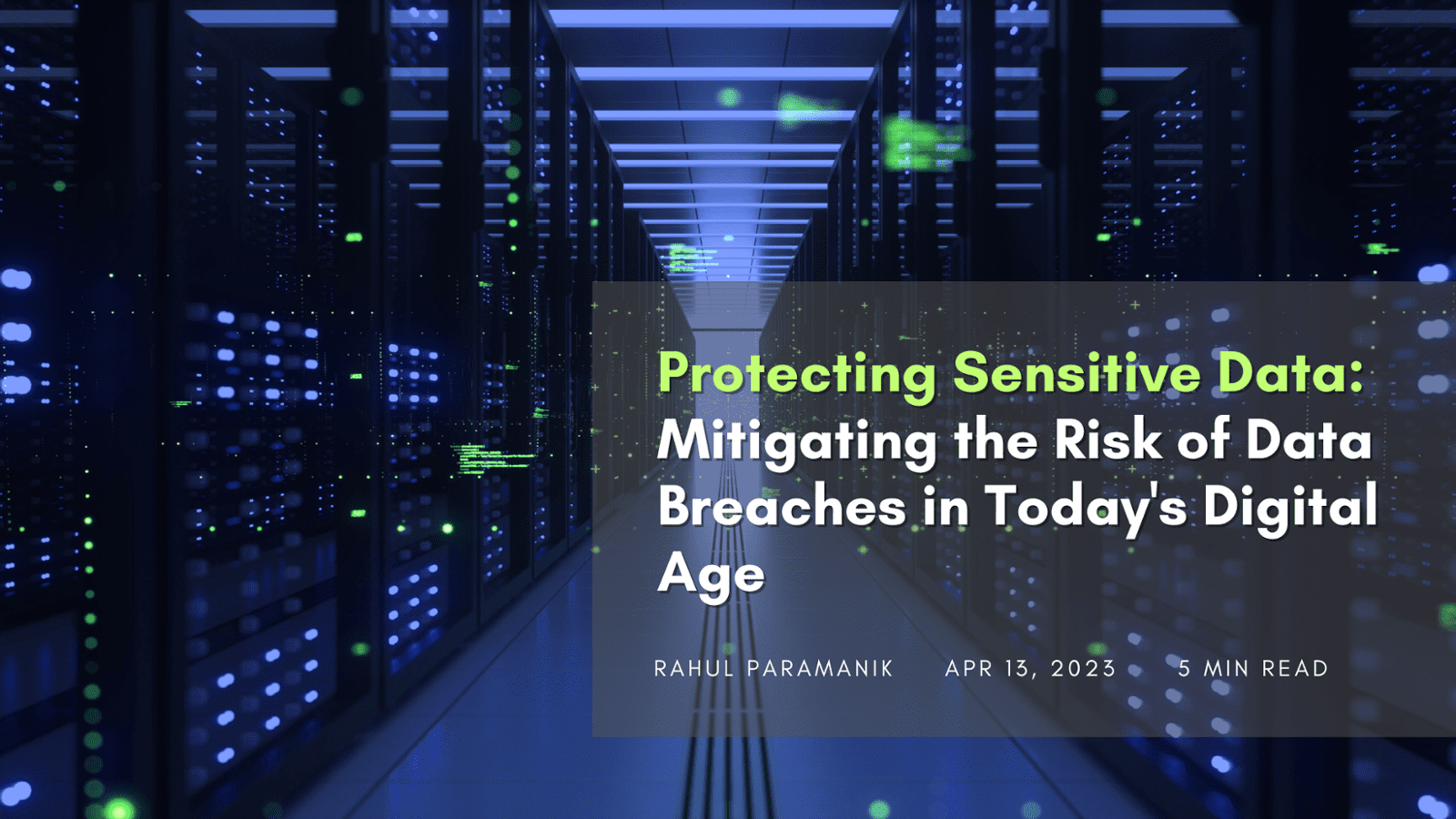
In today's digital age, data breaches have become a common occurrence, and the scale of damage they can cause to organizations cannot be overstated. According to recent statistics, approximately 52% of organizations worldwide have suffered a data breach in the past two years. This alarming trend highlights the importance of taking proactive measures to secure sensitive data and protect organizations from the catastrophic consequences of a data breach.
A data breach occurs when an unauthorized individual gains access to sensitive information that they should not have access to. The breach could be intentional or unintentional and could occur due to various reasons, including human error, system vulnerabilities, hacking, or phishing attacks. Once an attacker gains access to sensitive data, they can use it for nefarious purposes, such as stealing financial information, identity theft, or holding data for ransom. In some cases, a data breach can cause irreparable harm to the reputation of the organization, leading to loss of customers, revenue, and legal action.
The global pandemic has contributed significantly to the increase in data breaches, as more organizations are shifting to remote work environments. This shift has increased the potential attack surface for hackers, as employees are accessing sensitive data from home networks, which may not have the same level of security as office networks. This trend is expected to continue, even as more employees return to the office, as hybrid work models become more prevalent.
To mitigate the risk of data breaches, organizations must take proactive measures to protect their sensitive data. One of the most effective ways to protect sensitive data is by implementing a robust cybersecurity framework that includes multiple layers of security. This includes firewalls, intrusion detection and prevention systems, anti-malware software, and regular software updates.
Organizations should also implement strong password policies and ensure that employees change their passwords regularly. This helps to prevent attackers from using brute-force techniques to gain access to sensitive data. Additionally, organizations can implement multi-factor authentication, which requires users to provide multiple forms of identification before accessing sensitive data.
Training employees on cybersecurity best practices is also crucial in mitigating the risk of data breaches. Most data breaches occur due to human error, such as employees clicking on phishing links or sharing sensitive information with unauthorized individuals. By providing regular training on cybersecurity best practices, organizations can ensure that their employees are aware of the risks and take the necessary steps to prevent data breaches.
Another effective way to mitigate the risk of data breaches is by conducting regular vulnerability assessments and penetration testing. These tests help organizations identify potential vulnerabilities in their systems and applications before they can be exploited by attackers. By identifying these vulnerabilities early, organizations can take proactive measures to fix them and prevent data breaches.
Finally, organizations must have a robust incident response plan in place in case of a data breach. This plan should include procedures for identifying, containing, and recovering from a breach. It should also include communication plans for notifying customers, partners, and regulatory agencies about the breach. By having an incident response plan in place, organizations can minimize the damage caused by a data breach and ensure that they can recover quickly.
In conclusion, data breaches have become a common occurrence, and the scale of damage they can cause to organizations cannot be overstated. According to recent statistics, approximately 52% of organizations worldwide have suffered a data breach in the past two years. The global pandemic has contributed significantly to the increase in data breaches, as more organizations are shifting to remote work environments. To mitigate the risk of data breaches, organizations must take proactive measures to protect their sensitive data, including implementing a robust cybersecurity framework, training employees on best practices, conducting regular vulnerability assessments and penetration testing, and having a robust incident response plan in place. By taking these steps, organizations can protect their sensitive data and minimize the damage caused by a data breach.

